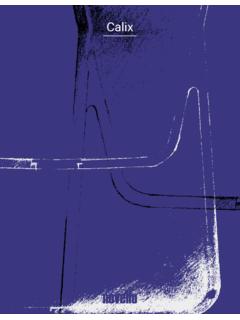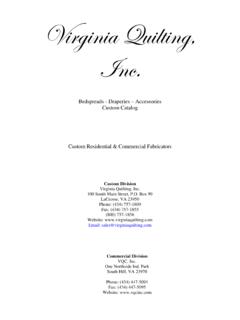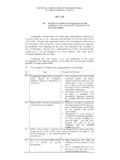Transcription of Details and techniques for building and renovating Gulf ...
1 A pattern bookforDetails and techniques for building andrenovating Gulf Coast housesmississippi renewal forumgulf coast neighborhoodsTo the Residents of the Gulf Coast:As a result of the leadership of the Governor's Commission on Recovery,Rebuilding and Renewaland the efforts of many talented professionals, APattern Book for Gulf Coast Neighborhoods is now available. This valu-able tool marks a new beginning in the rebuilding efforts of our residentsand businesses throughout the Gulf Coast region. While many of our mostloved places have disappeared, we are compelled to rebuild the Coast in atime- honored way. To ensure that this effort is properly performed, I urgebuilders to use this pattern book in their efforts. It will not only result inbeautiful buildings, but also strong and well- protected homes and Pattern Book for Gulf Coast Neighborhoods follows the tradition ofAmerican town building by providing practical tools and resources for smallbuilders, homeowners and suppliers.
2 In an effort to conserve and restorethe sense of place that is specific to each locality, this book provides a kindof DNA code for our communities and our inherited architecture. Patternbooks have been in use since ancient Roman times, and the British broughtthe idea to the American colonies, where pattern books remained a com-mon town- building tool through the first half of the 20th Century. With-in this pattern book is a resource that offers general direction for charac-ter retention that should be used in both renovation, as well as newconstruction wish to thank and acknowledge the many agencies and participantswho contributed in the preparation of this document. So many people haverisen to the challenge of Hurricane Katrina's impact, and I am proud tohave their help in our time of need. Marsha and I look forward to peoplerebuilding our remarkable neighborhoods and communities and hope thispattern book will help bring back some of the best of what we ,Haley BarbourGovernorGovernor s Commissionon Recovery, Rebuilding,and RenewalChairmanJim Barksdale Vice ChairmenDerrick JohnsonRicky Matthews Jerry St.
3 Pe Joe Sanderson Anthony Topazi Outside CounselWilliam Winter Commission StaffHenry Barbour - Executive DirectorBrian Sanderson - General CounselEmily Fair - Staff Assistanta pattern book for gulf coast neighborhoodsUrban Design Associates707 Grant Street,31st FloorThe Gulf TowerPittsburgh, PA urban design associates, 2005 Drawings in the Gulf Coast Pattern Book are forillustrative purposes only and not to be used forconstruction purposes. A professional architect orengineer should be consulted for any thanks to all the CNU contributors well asJohn Norquist and his staff for a terrific job organ-izing the design teams. To Andres Duany and thegreat folks at DPZ for their tireless support andwork to bring everyone together to find optionsfor rebuilding in ways that enhance traditionalurbanism in the Gulf s Gulf Coast has a rich archi-tectural heritage that has created a col-lection of neighborhoods remarkable fortheir diversity and unique regional char-acter.
4 While the architecture of the hous-es varies from town to town, a commonarchitectural language was shared by theregion's traditional builders which hasresulted in the unique character and qual-ity of neighborhood streets, public spacesand parks, and downtown streets. As wewalk along these streets today, or remem-ber doing so in places that are now gone,it is the graceful porches, the ornamenton top of a porch column, the grandeurof tall narrow windows, and the graceful-ness of a cornice detail that tell us wherewe are and who we devastation wrought by hurricanesin the region destroyed many of thebuildings which created these streets,Purpose of the Gulf Coast Pattern BookOverview of the Gulf Coast Pattern Bookneighborhoods, and towns. With theurgent need to rebuild, it is essential tofind the most efficient and cost effectivemeans for providing housing and makingit possible to resume activities.
5 However,there is also a danger that the essentialqualities of these places will be lost. Theuse of mass production, standardizedplans, modular units, and the need forspeed, could result in generic buildingsthat seem the same as anywhere is also imperative to make sure thenew houses are as well prepared as possi-ble to withstand future storms. FEMA isintroducing new regulations which willresult in further changes in the way inwhich houses are Mississippi Renewal Forumhasdeveloped concepts for rebuilding townsand cities in new ways but as traditionalurban environments. That work address-This Pattern Book is organized in foursections:The Overview,NeighborhoodPatterns, Architectural Patterns,and Land-scape Patterns. Each section is designed toprovide key information to help informdesign and site planning decisions abouta planned renovation or new house Neighborhood Patternssectionopens with a series of illustrations thatdescribe the way in which individualhouses create a Gulf Coast neighborhoodstreet.
6 Illustrations include different typesof streets including small scale neighbor-hood streets, larger scale streets, and com-mercial streets. It then provides a descrip-tion of the various Gulf Coastneighborhoods and relates them to theTransect Zones in the SmartCode whichserved as the basis of the conceptual plansthat developed in the Forum. Each zonehas an appropriate range of building typesand street cross sections. And finally, building types will need to respond toFEMA regulations that control the min-imum floor elevation of buildings. Inaddition to determining the range ofappropriate house types, this will requireparticular care in placing the house on thesite and designing elements such as stairs,porches, and other elements that relatethe house to the Architectural Patternssection pres-ents guidelines for building or renovatingArchitectural Patternses the larger scale issues of new urbanpatterns, building relationships and towncharacter.
7 It also has produced somebeautiful, large scale building proposalsfor waterfronts and Pattern Book for Gulf Coast Neighbor-hoodsprovides patterns for traditionalhouses and small commercial buildings asa resource for individual owners, localbuilders, architects and communities asthey rebuild houses, businesses andneighborhoods. Whether repairing adamaged house, erecting a pre-manufac-tured house, or building with conven-tional means and methods, readers willbe able to find appropriate patterns tohelp guide the process of designing andbuilding houses consistent with traditionsof the Gulf Coast. Mississippi architectsare a great resource to help residents andbusiness owners design appropriate build-ings for their 1 Purpose and Overview ofthe Gulf Coast Pattern Book1 How To Use the Pattern Book forGulf Coast Neighborhoods2sectionneighborhood patterns 4 Neighborhood Patterns 6 building a New TraditionalCommunity8 Neighborhood Character10sectionarchitectural patterns 12 Gulf Coast building Types13 Kit of Parts Strategies to MeetFEMA Requirements 14 building a Gulf Coast House18 Gulf Coast Architectural Styles20 Gulf Coast Acadian-Creole22 Gulf Coast Victorian28 Gulf Coast Classical 34 Gulf Coast Arts & Crafts40 Gulf Coast Mixed-Use46 Ancillary Structures andGarages52sectionlandscape patterns 54 Landscape Elements55sectionappendix 58 House Types58 Material Manufacturers68 Resources68 Glossary of Terms69back coverA Pattern Book
8 HistoryNeighborhood PatternsAB C D E Landscape Patternstraditional Gulf Coast houses and smallcommercial buildings within a specificarchitectural vocabulary. Four primaryarchitectural traditions found throughoutthe Gulf Coast neighborhoods are illus-trated with key Details , materials andshapes to help owners determine theappropriate design elements for theirhouse or Landscape Patternssection illus-trates specific examples of fencing, walls,paving, and garden types found in GulfCoast Appendix, illustrating a variety ofregional house plans and elevations pre-pared by architects as well as a listing ofmaterial resources, reference materialsand a glossary, is also pattern book for gulf coast neighborhoodsHow To Use The Pattern Book For Gulf Coast NeighborhoodsStep 1: Identify NeighborhoodType and CharacterThe Neighborhood Patternssection pro-vides an overview of the unique charac-teristics of each type of traditional neigh-borhood street and keys them to thetransect zone which identifies the rangeof appropriate building types, as well asarchitectural 2: Identify Appropriate HouseTypesThe rebuilding effort will identify areasfor different building and lot types, rang-ing from small cottages to large and com-plex mixed use buildings.
9 Review thepotential building types for the site andestablish the minimum required floor ele-vation above grade level for your floodzone. The diagrams on pages C14 - C17illustrate strategies to achieve variousminimum floor elevations for commonbuilding 3:Identify Appropriate Architectural Character Four primary architectural styles found inGulf Coast are documented in the Pat-tern Book: Acadian-Creole, Classical,Arts & Crafts, and Victorian. An addi-tional Mixed-Use building types isdescribed as well. These sections followthe structure outlined below:HISTORY & CHARACTERThe first page of every architectural stylesection begins with a brief description ofthe style and its history. Photos of rele-vant examples of the style in Gulf Coasthave been documented and are shownalong with the essential qualities of eachstyle. A partial elevation drawing andmeasured cross section relay the criticalvertical dimensions and elements of Details are illustrated with typical dimensions and locationsA Gulf Coast neighborhood corner lotAssembling the elements of a Gulf Coast houseMASSING & COMPOSITIONThis page describes the basic massingtypes or shapes of houses found in theGulf Coast precedents for each architec-tural style.
10 Each massing type is shownas a three-dimensional image with a cor-responding elevation diagram showingpotential additions. The layout of roomsshould be designed to fit into the mass-ing types found within the particularstyle. The roof types are part of this over-all massing & DOORSThe window and door spacing is relatedto both the shape and the style of thehouse. Typical window and door compo-sitions are illustrated as part of the mass-ing illustrations for each style. Typicalwindow and door proportions, trimdetails and special window or door ele-ments are illustrated on a separate pagewithin each & CHIMNEYSP orches are essential elements of thecharacter of many Gulf Coast neighbor-hoods. The location and design elementsof porches are covered on this page. Themassing of the front porch is specific toeach house type and distinct within a par-ticular are a key element in thecomposition of the elevation for some ofthe styles.



